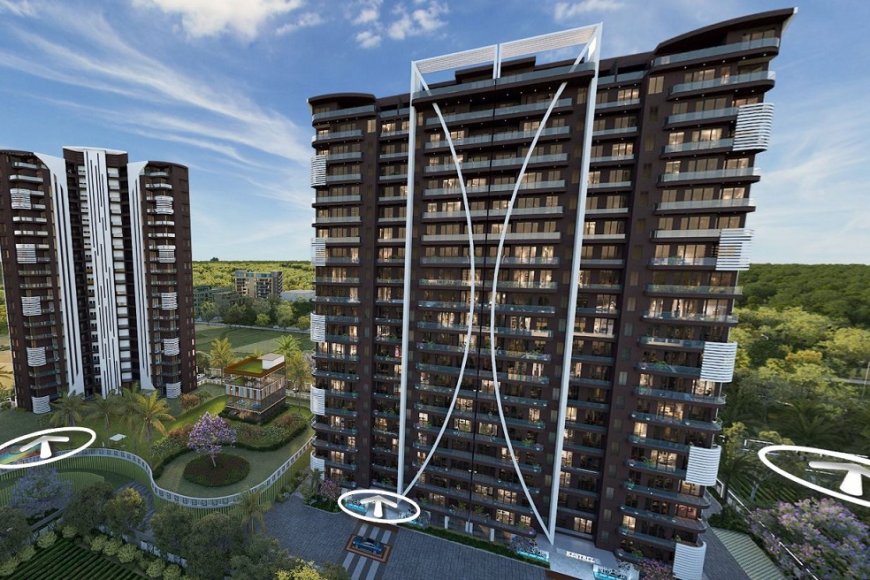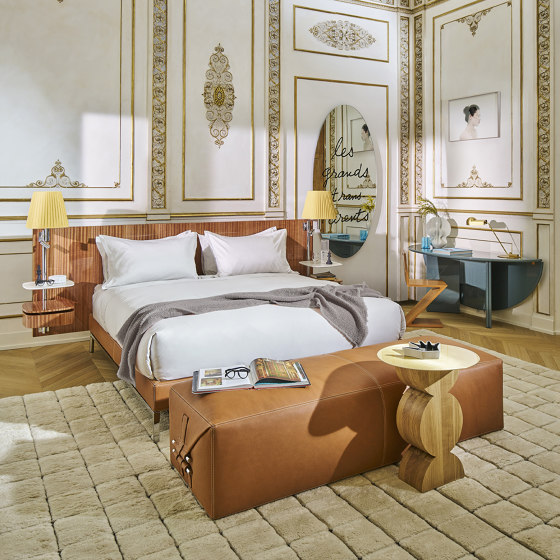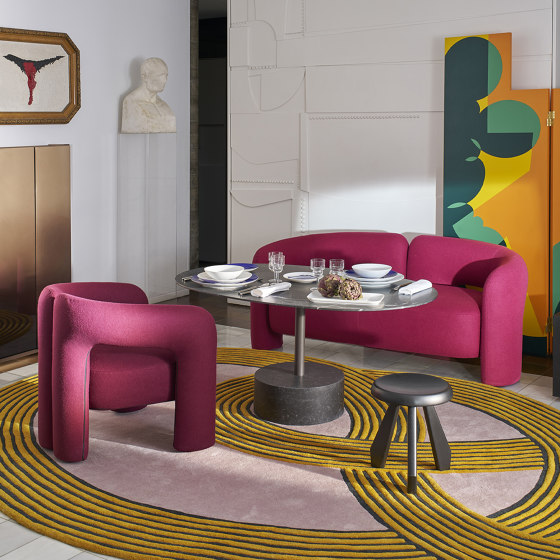SCUT punctuates vast mangrove forest in china with perforated lunar tower

a lunar tower overlooks coastal wetlands
Rising from the eastern edge of the Hainan Dongzhaigang National Nature Reserve, the Lunar Tower by the South China University of Technology Architectural Design and Research Institute Co. Ltd. (SCUT) serves as both an observatory and a monumental addition among one of China’s most ecologically significant wetlands. The reserve, home to the country’s largest continuous mangrove forest, sustains a dense network of biodiversity. Here, the tower acts as a calibrated instrument for viewing and understanding the environment rather than intruding upon it.
Positioned near the estuary, the cylindrical structure reaches a height of 33.5 meters (110 feet), its slender verticality mirrored in the surrounding mangrove trunks. From the top platform, the view expands toward the Qiongzhou Strait.
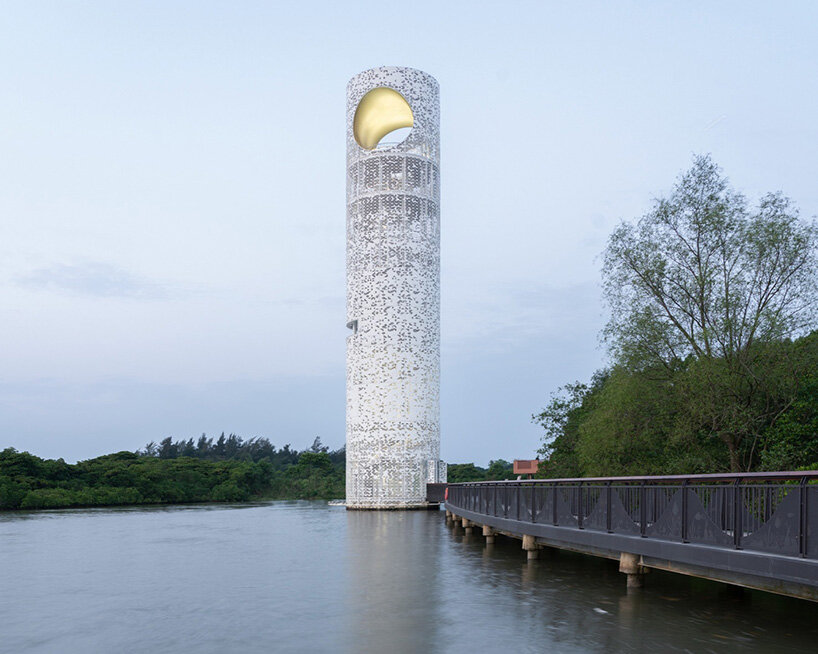
images courtesy SCUT
Ecological Integration by scut
The form of the SCUT-designed Lunar Tower follows a disciplined simplicity. Its cylindrical volume reduces ground disturbance and maintains minimal contact with the wetland below. Its vertical structure and compact footprint align with the reserve’s conservation objectives, allowing for scientific research, public observation, and disaster monitoring without compromising the delicate ecological setting.
The outer shell takes cues from the elliptical shape and rhythm of mangrove leaves, rendered in perforated, low-reflective white aluminum. This surface filters light, ventilates the interior stairwell, and softens the tower’s presence within the site. The subtle layering between facade and structure also creates an ecological buffer. This dampens human impact on migratory bird patterns while allowing the tower to breathe in the coastal air.

the Lunar Tower rises quietly from the mangrove wetlands of Haikou
a structure of steel and perforated aluminum
SCUT’s Lunar Tower balances structural precision with lightness. The tower’s steel frame, comprised of eighteen vertical pipe columns connected by ring beams and spiral stair ribs, forms a continuous system that resists both wind and torsion. Filled concrete in the lower sections strengthens the base against typhoon-level forces while maintaining an overall sense of weightless rhythm.
From ground to summit, the tower accommodates ascending sequences of rest and observation platforms at 12, 24, and 27 meters. The staircases spiral through the perforated skin, offering intermittent glimpses of mangrove foliage and tidal movement. Each landing marks a shift in temperature, light, and sound — a gradient of experience shaped by elevation over enclosure.
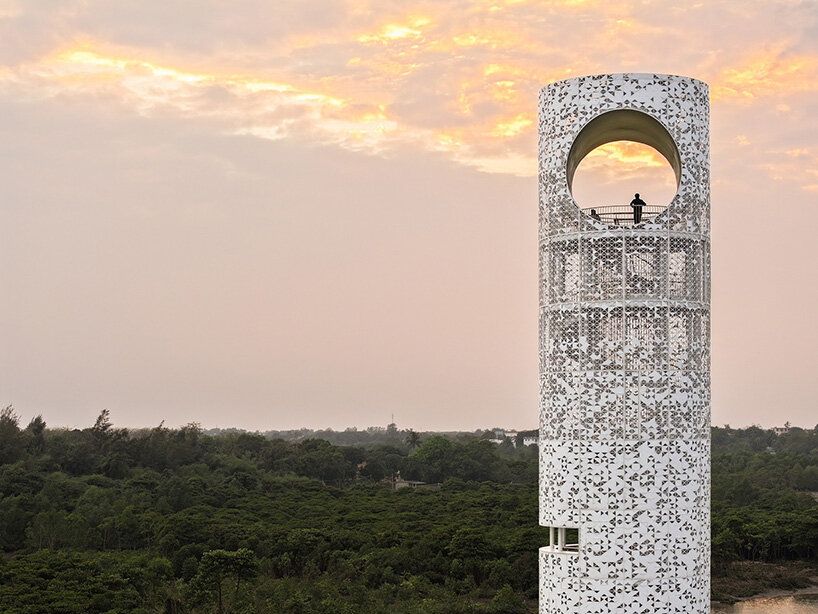
SCUT designed the structure as both an observatory and a space for reflection
an atmosphere informed by sunlight
As daylight recedes, the tower’s identity transforms. Its circular upper aperture glows like a faint lunar disc, earning the structure its name. The lighting scheme remains restrained, designed to safeguard migratory bird routes while articulating the tower’s geometry. Interior light sources are subdued, while subtle illumination across the outer panels and upper ring evokes the gradual appearance of moonlight.
This quiet play of reflection connects the structure to its environment — the pale aluminum surface gathering the changing hues of the sky and sea. Through these shifts, the Lunar Tower embodies SCUT’s approach to ecological architecture: design as an extension of the landscape’s own rhythms rather than a departure from them.
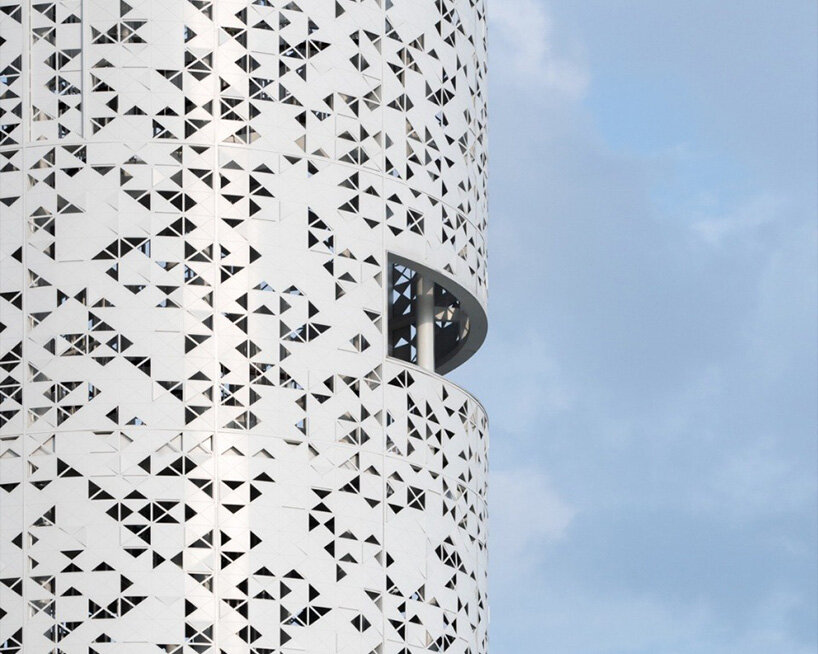
its cylindrical form minimizes impact on the surrounding ecosystem

perforated aluminum panels filter light and air through the tower’s skin
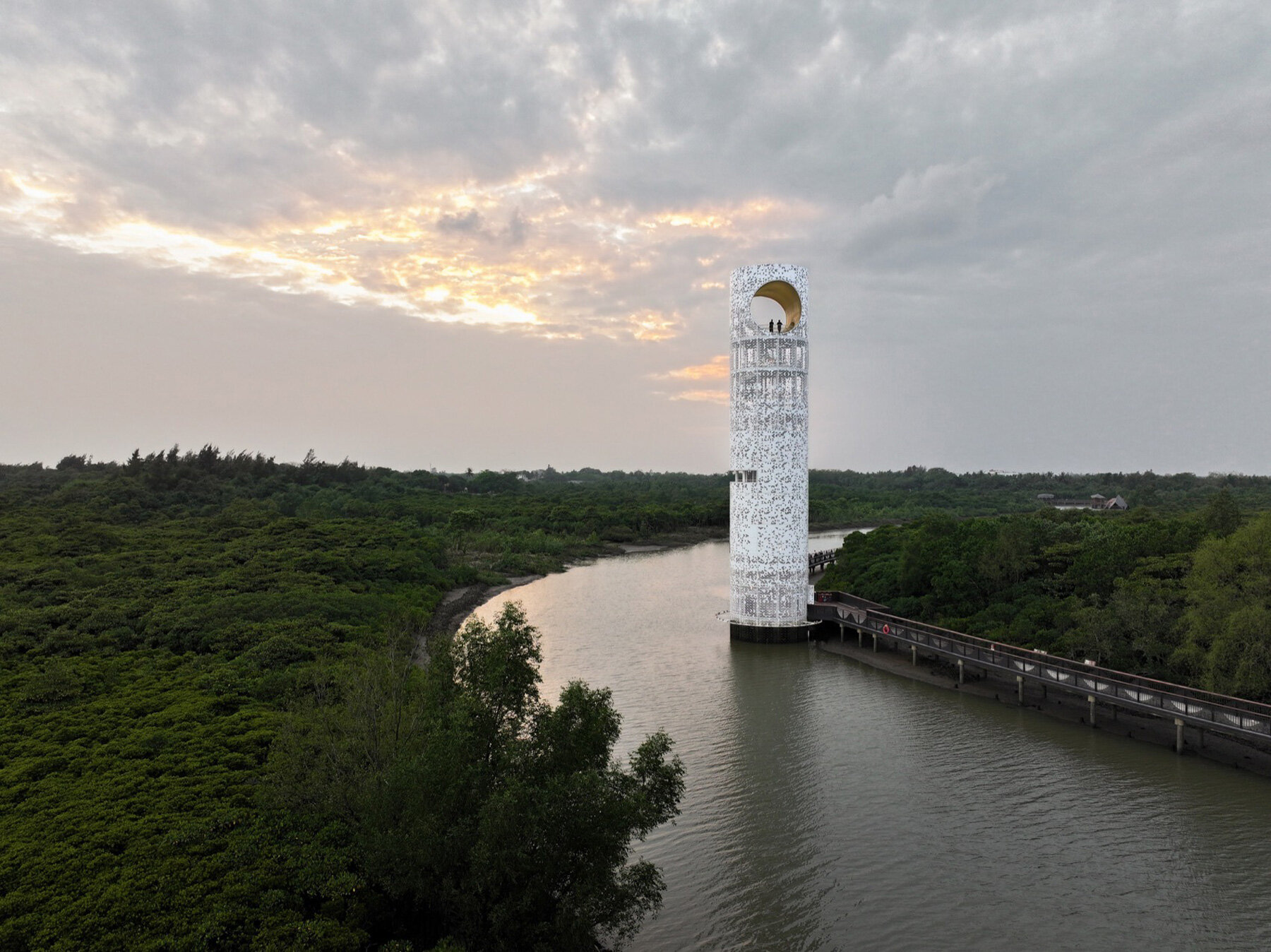
the design draws inspiration from the shape and rhythm of mangrove leaves

a spiraling staircase connects three observation platforms at varied heights

at night, the circular aperture glows softly like a distant moon over the strait
project info:
name: Lunar Tower
architect: Architectural Design Research Institute of SCUT
location: Hainan, China
lead architect: He Jingtang, Bao Ying, Pei Yue
design team: Chen Muqi, Huang Xueying, Wu Senlin, Pei Zejun, Li Kaixin, Han Yun, Zhou Yuezhou, Yang Shenyin, Qin Baiyuan, Huang Yong, Lin Zekai, Cen Hongjin, Huang Shihua, Yu Yang, Chen Huajian, Wu Xi, Huang Guangwei
client: Hainan Red Mangrove Tourism Co., Ltd.
The post SCUT punctuates vast mangrove forest in china with perforated lunar tower appeared first on designboom | architecture & design magazine.


